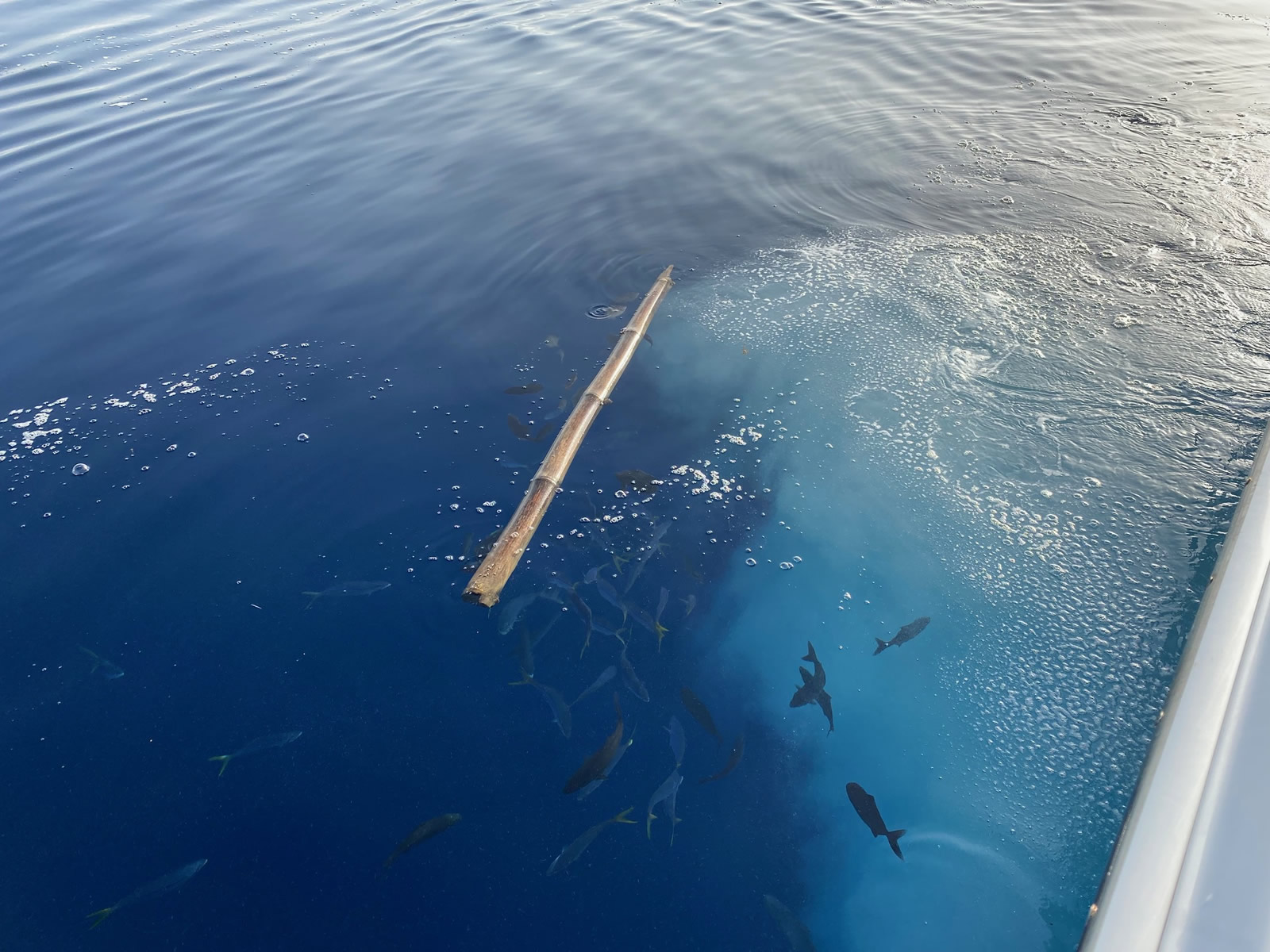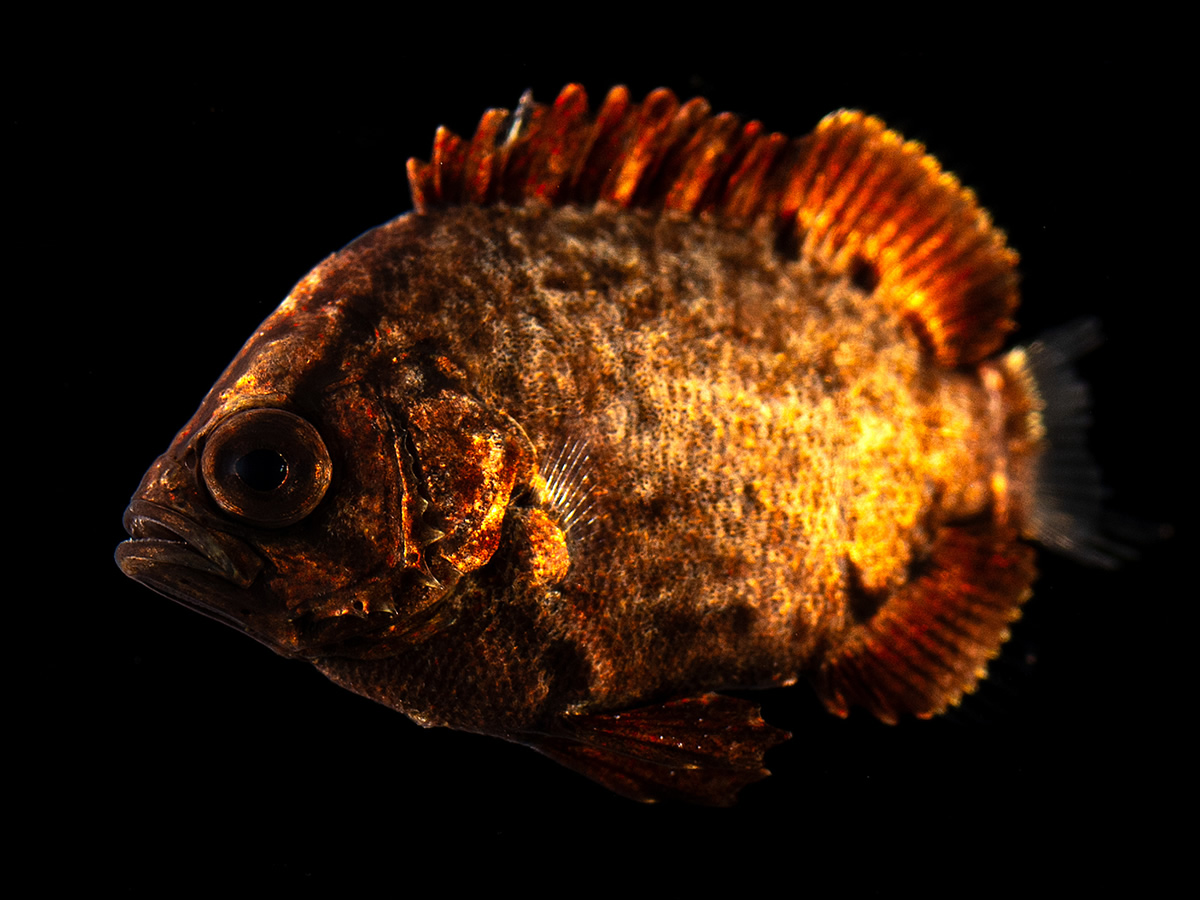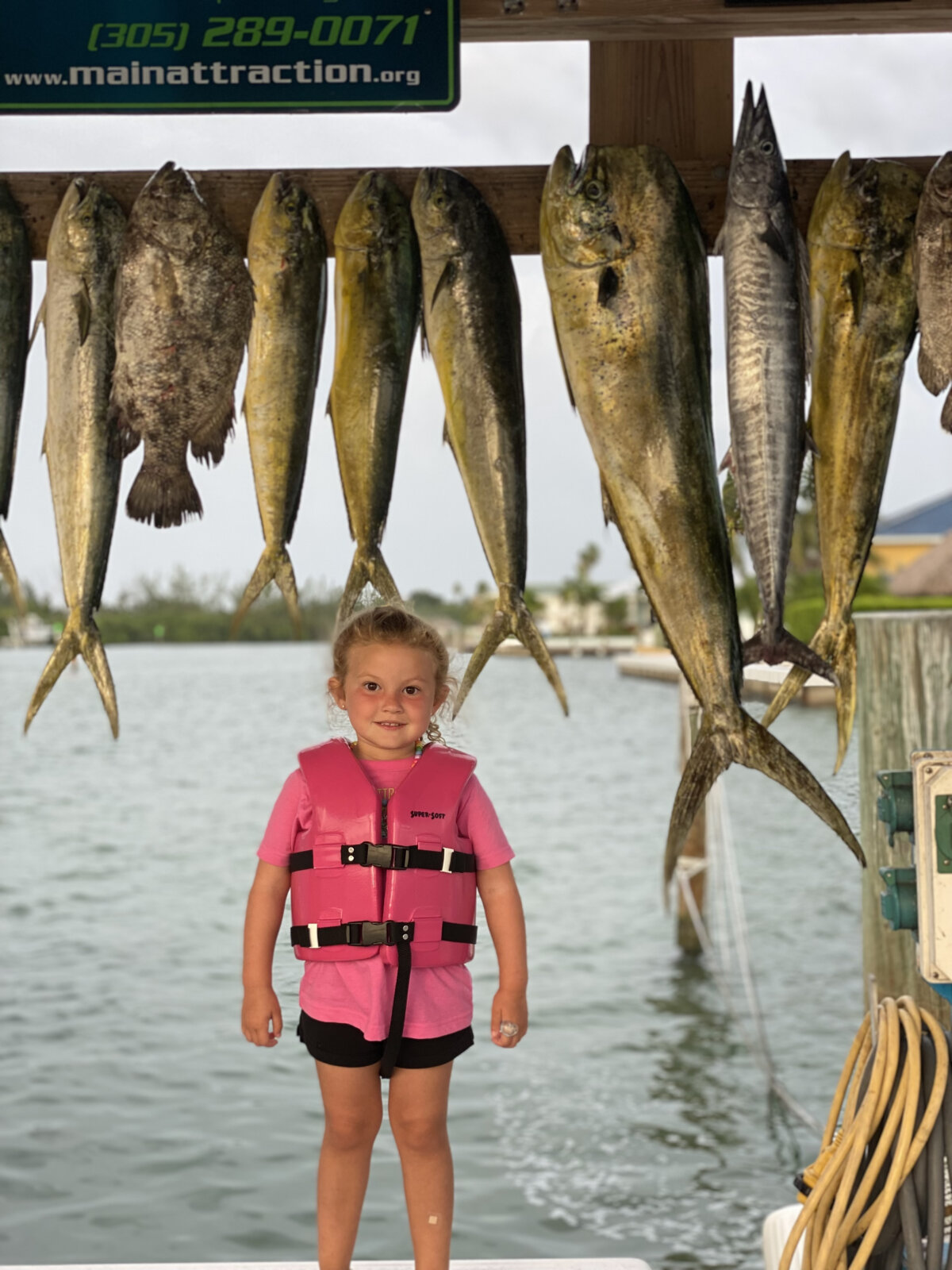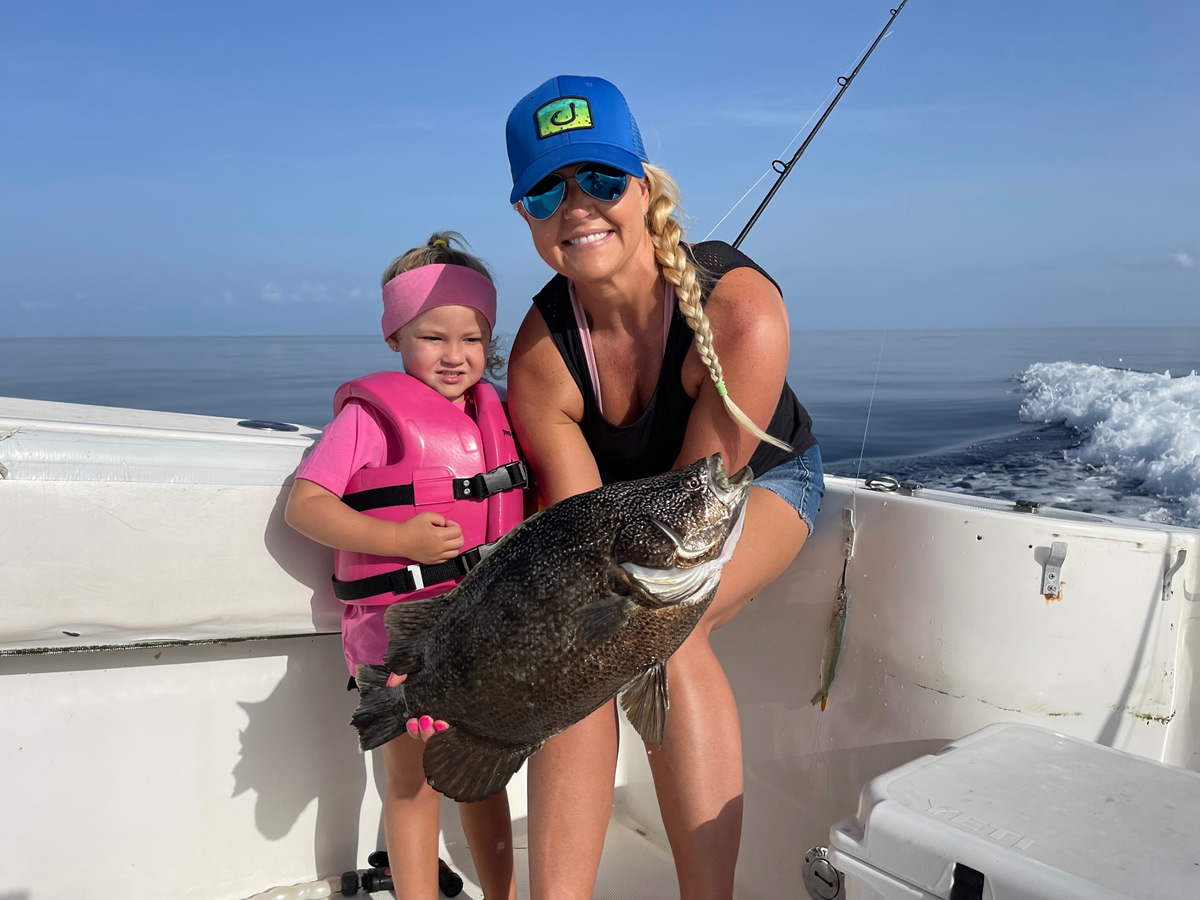The atlantic tripletail (Lobotes surinamensis) is known by many nicknames, including buoyfish, black grunt, black perch, sleepfish, and conchy leaf. No matter what you call them, these fish are fascinating, thrilling to catch, and delicious to eat!

Geographic Location
Despite being relatively unknown, tripletail are found in tropical and subtropical waters worldwide. Although they have a broad distribution, tripletail are less extensively studied than other fish species, leaving much of their behavior and life cycle a mystery to marine biologists.
There are two genera of tripletail: Lobotes, which reside in saltwater, and datnioides, found in freshwater and brackish environments. In the Florida Keys, saltwater tripletail are found in the Gulf of Mexico and the Atlantic Ocean. This article will focus specifically on the Tripletail we encounter here on the Atlantic side of the Florida Keys.
How To Find Tripletail
While hunting for schools of dolphinfish (mahi) during the summer months, we at Main Attraction frequently encounter the fascinating atlantic tripletail. These masters of disguise can be found year-round lurking near or under offshore floating objects. Nicknamed “lazy eaters” or “lazy swimmers,” tripletail employ a brilliant strategy. They cleverly float on their sides, mimicking a dead leaf amongst debris. This allows them to effortlessly wait for unsuspecting prey to swim right up to their waiting mouths!

Appearance
The tripletail’s name is a clever giveaway to its most distinctive feature. Unlike most fish, their dorsal and anal fins stretch far back towards the tail, creating the illusion of three tails. This unique body shape isn’t just for show, though. It plays a vital role in their masterful ‘leaf-like’ camouflage.
Juveniles often sport a vibrant yellow outfit dotted with black spots, a perfect disguise amidst floating sargassum grass resembling a decaying leaf.

Mature adults try to vanish with a dark brown to almost black coloring, often matching a nearby piece of timber floating in the ocean. Their impressive camouflage is further enhanced by their ability to rapidly change color, providing an additional layer of defense against predators. Yes, in a flash, a tripletail can change its color dramatically. This rapid color-changing ability is an impressive performance that fools predators but rewards our sharp-eyed captains!
Longevity and Growth
Tripletail feed on a diet of small fish and invertebrates such as crabs and shrimp. They grow quickly, especially in their first year. The average lifespan of a tripletail is around 5 years, often shortened by large predators like sharks, barracudas, and even humans. However, some fortunate tripletail can live up to 10 years and reach impressive sizes, with some growing over 3 feet long and weighing more than 40 pounds!
Social Behavior
We often find tripletails on their own, hinting that they are solitary creatures. However, there have been instances of tripletails forming loose aggregations under large floating objects. Scientists are still determining why they do this, but theories include cooperative feeding or spawning behavior.
Reproduction
The spawning behavior of the atlantic tripletail is still not fully understood, but researchers have gathered some insights into their reproductive patterns. Typically, it occurs during the warmer months, from May to September, depending on the region and environmental conditions. They prefer offshore waters for spawning, often near floating structures such as sargassum mats, buoys, or debris, which provide a suitable environment for the eggs and larvae. During the spawning season, Tripletail may form loose aggregations to facilitate the release and fertilization of gametes into the water column. The fertilized eggs are pelagic and hatch into larvae within a few days, continuing their development in open water by feeding on plankton and other microscopic organisms.
As juvenile tripletail grow, they move towards nearshore and inshore waters, seeking shelter and food sources near floating structures or other forms of cover. They exhibit rapid growth, especially in their first year, and reach sexual maturity relatively quickly, with some individuals capable of spawning by the end of their first year.

How To Catch A Tripletail
When we approach a floater offshore and identify a tripletail offshore, we pitch whatever bait we have on hand and they usually take it. A whole small ballyhoo, cut bait, pilchard or shrimp can all be quite irrestibale to a hungry tripletail. Just remember they are lazy and will stay within the floater, so make sure you pitch it close enough to the floater and somewhere they will see it. Some anglers have been known to approach a tripletail playing ‘dead leaf’, and scoop it right out of the water with their landing net!
However, when writing this article, FWC regulations require that you only catch an atlantic tripletail with hook and line. It is more fun fighting them on the rod anyway, and handling a tuckered-out Tripletail might be safer since they have a razor-sharp gill plate that can cut you!
Food Value
Tripletail are highly valued both recreationally and commercially. They are known for their excellent taste and firm, white meat, making them a prized catch for anglers and a sought-after dish in seafood markets. We always get excited when a tripletail comes on board. Their fish is white, flaky, mildly flavored, and as firm as a grouper.

Fishing and Conservation
The International Union for Conservation of Nature lists the atlantic tripletail as a least-concern species. This is likely because Tripletail are not caught in bulk; generally, a boat finds one or two, and that is it for the day. At the time of writing this article the Florida Fish and Wildlife Conservation Commission has a bag limit of two fish per day per person with a minimum length of 18 inches for recreational fishing (always check local regulations before harvesting tripletail.)
Conclusion
The atlantic tripletail, with its many nicknames and unique behaviors, offers an exciting and rewarding experience for anglers. Despite being less studied than other fish species, its fascinating camouflage, rapid growth, and excellent taste make it a prized catch in the Florida Keys.
At Main Attraction Fishing Charters, we love encountering these masterful mimics and the joy of catching them. By practicing sustainable fishing and adhering to regulations, we ensure that future generations can continue to enjoy the excitement and satisfaction of fishing for atlantic tripletail.
That concludes the ninth installment of our Fish Facts series, we hope you found it interesting. If you wish to book an offshore fishing charter this summer, contact us at (305) 289-0071 or visit our contact page. And who knows, the next floating object in the water you see might have a tasty atlantic tripletail under it!




